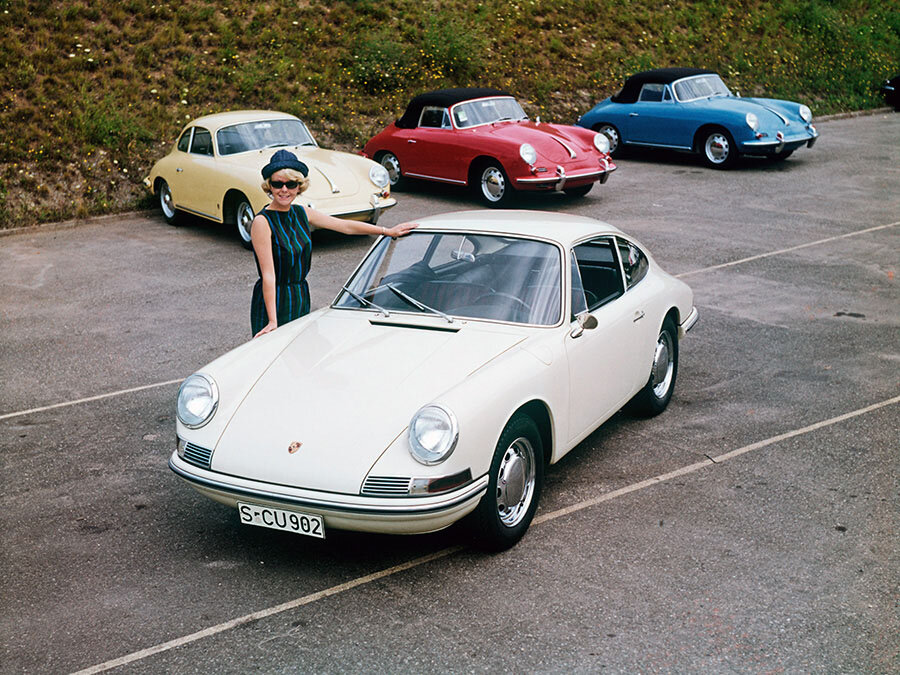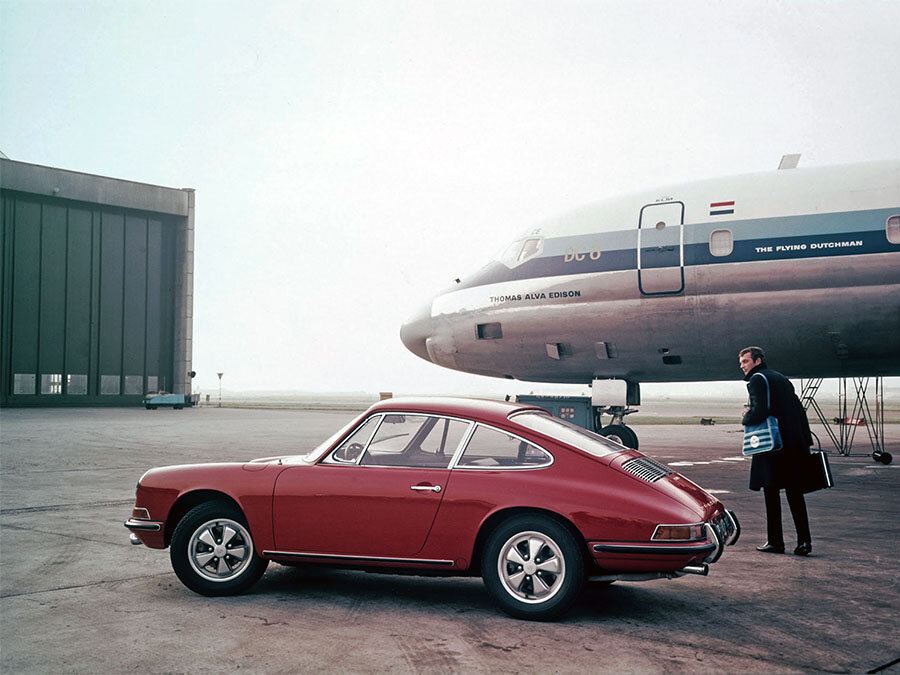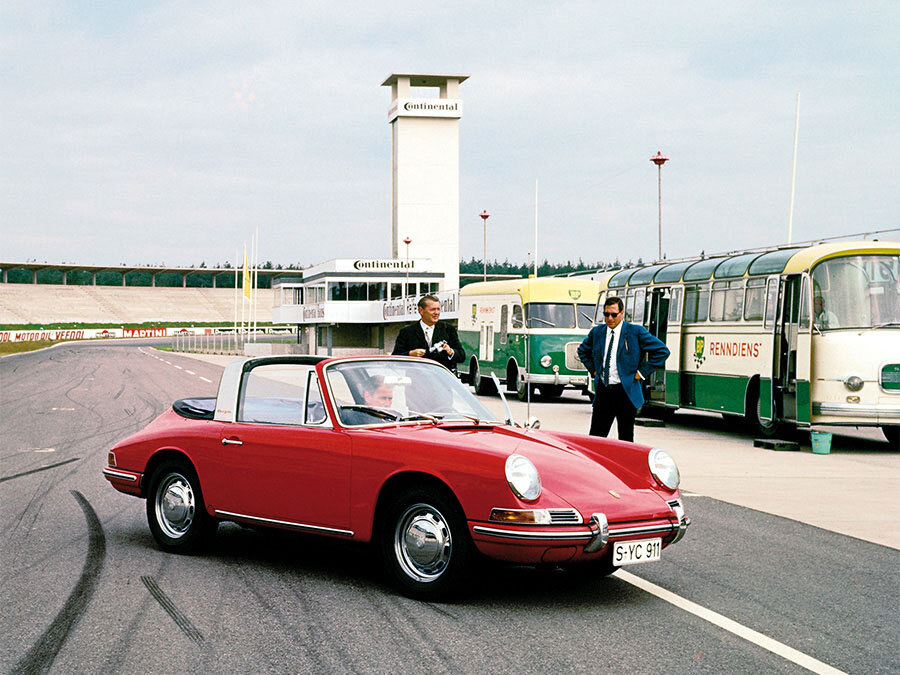Guide: Porsche 911 2.0 O-series - a Historical & Technical Appraisal
/BACKGROUND
During a production run that lasted from 1948 to 1965, the 356 helped Porsche become established as arguably the world’s premier manufacturer of small displacement performance cars.
The brand became a byword for iconic design, sporting success and exceptional build quality but, by the early 1960s, it was clear their ageing four cylinder 356 would soon need to be replaced.
Porsche wanted the 356 successor to be powered by a six cylinder engine mounted in the back of a slightly larger 2+2 bodyshell.
Against the odds, their new model eclipsed the 356 in every respect.
The Porsche 911 proved an enormous success: commercially it sold by the bucket-load while in motor sport, its accomplishments remain unmatched.
A prototype, originally called the 901, was unveiled at the Frankfurt Motor Show in September 1963. However, a legal challenge from Peugeot soon followed as the French firm already owned rights to the 901 type number.
After 13 901 prototypes had been built, Porsche switched to the now familiar 911 designation.
CHASSIS
The 911 employed a unitary steel bodyshell with a 2211mm wheelbase. This was 111mm longer than the outgoing 356 and ensured the 911 had a roomier cockpit and handled better.
The suspension layout was designed to provide as much luggage and interior space as possible.
At the front, each side used a compact MacPherson strut arrangement with a single lower wishbone, a 19mm torsion bar and telescopic shock absorber. This meant the front storage area was impressively large as the 61.4-litre fuel tank and steering rack could be mounted low down between the wheels. An anti-roll bar was also fitted.
The fully independent back end used a novel layout that comprised an independent semi-trailing arm, a transverse torsion bar and telescopic shock absorber on each side. It replaced the 356’s outdated swing-axle and meant the geometry responded to bumps in the road with minimal camber change.
ATE disc brakes were fitted all round. They had a 282mm diameter at the front, a 285mm diameter at the rear and ran off a single hydraulic circuit that powered both axles.
4.5 x 15-inch ventilated steel wheels came with an elegant chrome hub cap.
ENGINE / TRANSMISSION
The 911’s air-cooled all-alloy Flat 6 engine was derived from the Type 753 Flat 8 used in the 804 Grand Prix car of 1962.
Designated Type 901/01, standard equipment included dry-sump lubrication, overhead camshafts, hemispherical cylinder heads and a forged seven main bearing crankshaft.
Aluminium was used wherever possible but certain components required more a hard wearing material such as the cylinder walls (cast iron) and the connecting rods (steel).
Thanks to a bore and stroke of 80mm and 66mm respectively, the over-square new engine had a displacement of 1991cc.
It incorporated a vertically-mounted cooling fan, 9.1:1 compression ratio and two triple-choke 40PI Solex carburettors.
In this configuration, peak output was 130bhp at 6100rpm and 174lb-ft at 4200rpm.
Transmission was via a brand new Type 901 five-speed gearbox and single-plate clutch.
BODYWORK
The bodywork was designed by Ferdinand ‘Butzi’ Porsche who was the son of Ferry Porsche and grandson of company founder, Ferdinand Porsche.
Airflow was a key consideration and the 911 proved to be the most aerodynamically efficient road-going Porsche yet.
Clearly evolved from the 356, the 911’s basic profile was dictated by its unusual layout. By the 1960s most manufacturers considered the rear-engined configuration to be obsolete: however, it worked for Porsche.
Curvaceous front wings, a neatly tapered tail and glassy five-window cockpit made the 911 instantly identifiable.
Body panels were fabricated entirely from steel and the front wings were bolted in place.
Initially the 911 was only available as a Coupe.
INTERIOR
Like the exterior, the cockpit began a styling lineage that lasted for decades.
The 911’s trademark oval instrument binnacle housed five VDO dials that reduced in size from the central tachometer outwards. To the left were combined gauges for oil pressure / oil temperature and oil level / fuel. To the right was a speedometer and a clock.
Also distinctive was the wood-rimmed steering wheel with its four horizontally arced spokes.
Various toggle switches were scattered about the place and a full width wooden fascia was applied to the lower dash section.
Well-padded seats were upholstered in leatherette with Houndstooth cloth centres.
The rear seats could be folded down to provide additional luggage space and high quality velour carpet was standard.
OPTIONS
Options included leather upholstery, front head rests, a rear wiper, an electric sunroof, tinted glass, a supplementary electric heater, a roof rack, spot lights, Koni shock absorbers, chrome-plated wheels, hub caps with a coloured Porsche crest, a choice of Blaupunkt radios and a three-piece fitted luggage set in leather or canvas.
WEIGHT / PERFORMANCE
Porsche quoted a weight of 1030kg, a top speed of 131mph and 0-62mph time of 8.3 seconds.
PRODUCTION BEGINS
Production began in August 1964.
US deliveries started in February 1965 and the first right-hand drive examples were produced in May 1965.
By this time, Porsche had already started to use the 911 in competition: an outing for a specially tuned example on the 1965 Monte Carlo Rally had yielded fifth place overall and second in class.
THE 912
April 1965 saw production of the Porsche 912 begin. Powered by the four cylinder 356 engine, it was conceived as an entry-level 911 and initially outsold the considerably more expensive six cylinder variant.
911 TARGA PROTOTYPE
In September 1965, Porsche displayed a prototype 911 Targa at the Frankfurt Motor Show.
Production versions were available from late 1966 and the Targa went onto become a very popular body style.
EARLY PRODUCTION CHANGES
As the original Solex carburettors proved difficult to keep in tune, they were dropped in favour of Weber 40 IDAs from March 1966.
The new Weber-carb engines were given type number 901/05.
911 S
In July 1966, Porsche unveiled an uprated 911 S, production of which started in October.
The 911 S was fitted with a Type 901/02 engine that still displaced 1991cc, but came with a host of performance upgrades.
Bigger intake and exhaust valves were fitted plus hardened connecting rods and forged pistons.
Compression was increased from 9.1 to 9.8:1 and two Weber 40 IDS carburettors were installed along with a more efficient gas-flowed three-to-one exhaust system.
The engine was given a distinctive red cover instead of black.
As a result of these changes, power went from 130bhp at 6100rpm to 160bhp at 6600rpm. The torque rating was 179lb-ft at 5200rpm compared to 174lb-ft at 4200rpm for the regular 911.
The 911 S also came with Koni shocks as standard and a bigger front anti-roll bar. A rear anti-roll bar was now installed as well.
Ventilated disc brakes were fitted for the first time and, as these were slightly thicker than the standard non-ventilated discs, the 911 S benefited from slight wider track at both ends.
To replace the standard steel rims, the 911 S came with 15-inch diameter Fuchs forged alloy wheels that still measured a comparatively narrow 4.5-inches wide.
A 911 S badge was mounted on the engine cover. The sill and bumper trims were given thicker rubber inserts (optional on non-S 911s).
Inside, the 911 S came with a leather-rimmed steering wheel and a basket-weave dash insert instead of wood.
Top speed rose to 136mph and 0-62mph dipped to 7.9 seconds.
911 S RALLY KIT
One particularly desirable addition that could be specified for the 911 S was the optional Rally Kit.
The Type 901/30 Rally Kit engine featured a different ignition system plus uprated Weber carburettors (bigger venturis and jets and rain lids instead of air cleaners). A supplementary oil catch tank was also fitted. Peak output was 170bhp at 7300rpm.
In addition, the Rally Kit included thicker anti-roll bars (15mm front and 16mm rear), uprated Ferodo brake pads, extra underbody protection, a limited-slip differential, eyehooks for safety harnesses and a roll cage.
Weight was unchanged at 1030kg.
The Rally Kit II added a free-flow twin-pipe centre-exiting exhaust system which took the power rating to 175bhp.
Customers wanting to order a car for competition use could separately specify the likes Scheel bucket seats, a different gear set, no underseal, a smaller-diameter steering wheel, wider wheels, a long-range fuel tank and spot lights.
LATER PRODUCTION CHANGES
At the same time as the S was introduced (October 1966), a couple of universal changes were made to the standard 911.
Forged valve rockers were replaced with cast iron and new gear ratios were adopted. As a result, the engine type number was changed from 901/05 to 901/06.
911 TARGA
Production of the 911 Targa began in December 1966 and the new body style proved especially popular in the USA.
It offered the option of open top motoring but with all the practicality of a Coupe.
Thanks to a hefty stainless steel roll hoop, Targas retained much of the Coupe’s structural rigidity.
Once removed, the roof panel could be stowed behind the front seats or (once folded) in the front luggage compartment.
The zippered plastic rear window could also be removed almost transforming the Targa into a full convertible.
As a result of additional structural reinforcement, Targas weighed around 50kg more than Coupes. They could be ordered in both S and Non-S trim.
END OF O-SERIES PRODUCTION
911s produced between August 1964 and July 1967 were referred to as O-series variants.
During this time, 8520 standard Coupes were built and 3422 911 S Coupes.
718 911 Targas were also built, a figure that included both S and non-S variants.
In August 1967, the O-series 911 was replaced by the A-series derivative.
Thereafter, each model year was given a sequential annual suffix (e.g. A-series for the 1968 model year, B series for the 1969 model year and so on).
Text copyright: Supercar Nostalgia
Photo copyright: Porsche - https://www.porsche.com




































